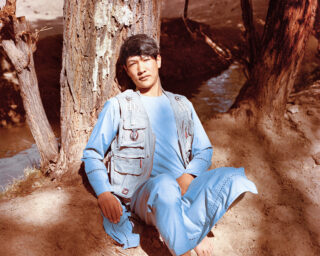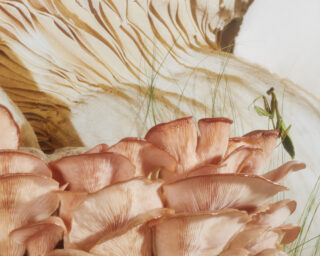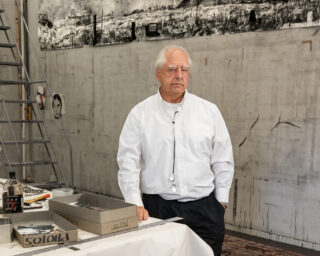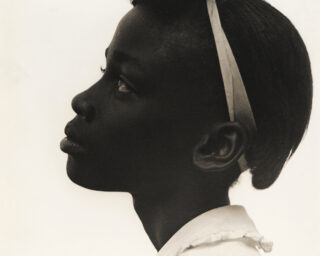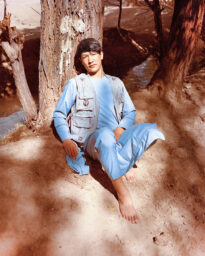ONLINE ONLY: Jason Fulford in Conversation with David Reinfurt—Part 2

Mai Abu ElDahab, Anton Vidokle, and Florian Waldvogel, eds., Notes for an Art School, 2006. Amsterdam, International Foundation Manifesta. Designed by Dexter Sinister. 6 1/4 x 10 in. (15.9 x 25.4 cm), 96 pages, paperback.
David Reinfurt: William James described “attention” as what you choose to attend to, what you select as your present moment. “My experience is what I agree to attend to.” There is a lot in that idea that it is a conscious act to decide, “This is my present moment.” There was a series of fascinating experiments done by German psychologists at the end of the nineteenth century that attempted to measure how long a person understands the present moment to be.
Jason Fulford: It sounds like the font you’ve made for the Kadist Art Foundation, which is updated once a week. In this instance, the present is one week.
DR: Yes, the project for Kadist was about framing the organization’s present. The late-nineteenth-century experiments to define the length of an individual’s sense of the present suggested a human average of approximately seven seconds. The experiments were made using a series of sounds or musical chimes. The participants were asked to say when a previous chime had gone out of their present moment, when it was no longer there. There was a related experiment in which they added a metronome to the chime, so you could see a pendulum go back and forth—tick, tick, tick, tick. The subjects were supposed to indicate when they heard the chime, which sounded when the metronome pendulum reached the furthest point. The experiments consistently showed that the longer a subject participated in the experiment the farther ahead of the actual chime they would hear the chime.
JF: They were anticipating it.
DR: Yes, anticipating it, which makes sense. James puts this phenomena in the realm of attention, saying that the perceptual act is something you are initiating and that it’s your decision to say, “I see,” or “I feel,” or “I hear.”

Alex Klein, ed., Words Without Pictures, 2010. Los Angeles/New York, Los Angeles County Museum of Art/Aperture. Designed by Dexter Sinister. 5 3/4 x 8 1/4 in. (14.6 x 21 cm), 510 pages, paperback.
JF: You just reminded me of my friend Meghann. She told me that at some point in her childhood, her mother got the idea that Meghann’s sister liked clocks. So, for every holiday or special occasion, her mother would give her another clock—to the point that her room was full of ticking clocks. Her sister admitted later to Meghann that she wasn’t actually interested in clocks at all, and that this was just a strange notion that her mom had; in face she found them really disturbing. [laughs] On our way down to the Computer History Museum I was asking you about The Serving Library, and why its contents are initially published as a downloadable PDF and then are printed as a book. Why both of those forms?
DR: Well, it’s clearly a choice, a design choice that is supposed to stand for a point of view. It manifests a larger idea about how something works. In the case of The Serving Library publication, our choosing to both release it as PDFs online and in print has practical ramifications, but it’s more a statement about how those two things are different from each other and how they can live and work together. We print thematic “bulletins” of The Serving Library. Every six months we organize about seven to ten texts of about two thousand words each on a given a theme. So we imagine these as kind of semester-length publications, in a way, half-a-year-length publications. They’re supposed to work without the context of any of the other texts that are released at the same time …
JF: An archipelago of ideas.
DR: It is, actually. So, they are supposed to work completely on their own. They shouldn’t rely on prior knowledge of previous bulletins, because as with any editorial umbrella, which The Serving Library is, you are editing for an audience that you don’t fully know and doesn’t fully know you.
JF: But as a publisher you have a point of view that people become familiar with.
DR: Yes, exactly, but we work with the assumption that each bulletin has to stand on its own. It can’t rely on some assumption from a previous text.
JF: It’s like the Golden Record sent into space in 1977 with the Voyager.

David Reinfurt, Stuart Bailey, and Angie Keefer, eds., Bulletins of the Serving Library #3, 2012. New York/Berlin, The Serving Library/Sternberg Press. Designed by Dexter Sinister. 6 1/2 x 9 1/4 in. (16.5 x 23.5 cm), 212 pages, paperback.
DR: Each bulletin is a golden record in and of itself. It should be able to travel in the world, land somewhere, be legible, and not need any other context or support. This effects how we decide to produce the bulletin. If we want to include an image—and the bulletins always have images on the cover—it has to have a certain format that makes them seem like an object as much as possible. We realized that we wanted to release the bulletin electronically but with a design form that had some sense of objecthood about it, some sort of discreteness, and also a certain fixity. A bulletin is published and released on the website on a certain date. The next text is often edited and written after the one that has been posted, so there is an embedded sense of chronology of the bulletin that gets posted over the six-month period.
JF: Let’s stick to form for a minute. You’re saying the form of the bulletin tells you how to use it.
DR: Yes.
JF: So, when you print the bulletins as a book, do they function differently than the digitally available PDFs?
DR: At the end of the six months, we collect the set of texts, and we print them in a journal—a magazine—which is called Bulletins of the Serving Library. This is distributed through conventional printed book-distribution channels and ends up in bookstores and on people’s bookshelves. And, unlike the PDFs, you have to pay for the book: it’s $15. We find that the printed journal accords the whole project a degree of legitimacy, which is partially problematic. But the fact that it is an object, is fixed and done, exists in the world, and you can differentiate it from another object manifests a certain kind of identity for the whole project.
JF: When I download your PDFs I always print them out to read.
DR: I think a lot of people do that, and that’s fine. It actually has nothing to do with the experience of reading on screen or not on screen, it’s the distribution mechanism. It’s the fact that you can download it right now, print it, and go read it, which is the way that you want to relate to it and which the distribution method allows. The texts are explicitly “bite-size.” We expect the reader to read one text, and to be able to do so right now.
JF: You know, after I’m finished reading the printed PDF bulletins, I cut the pages in half and I make a scrapbook. I recycle the PDFs and they become a notepad.
DR: Oh, nice, lovely—
JF: —and then I use it for my daily lists, to-do lists go on the back. Eventually they’re shredded, and they are then composted and they go to the vineyards of Sonoma County. [laughs]
DR: [laughs] They go … really?
JF: Yes!
DR: [laughs] Wow, that’s a publishing ecology right there!
JF: I have a friend who works in the printing business. He found out that when a book published in the U.S. is remaindered, the leftover copies are shipped to China and most likely destroyed in one of two ways. They’re either shredded and turned into pig bedding or they’re shredded and put into fireworks as stuffing.
DR: [laughs] Beautiful.
JF: It makes this friend of mine think of how much work goes into the book, however many years the author is stewing about this stuff, getting it out of her system, finally getting a publisher, finding an editor to work it over, the designer to typeset it, the printer, the ink, the PR, all the radio interviews … and then eventually the books are exploding in the sky.
Interview has been condensed and edited.













